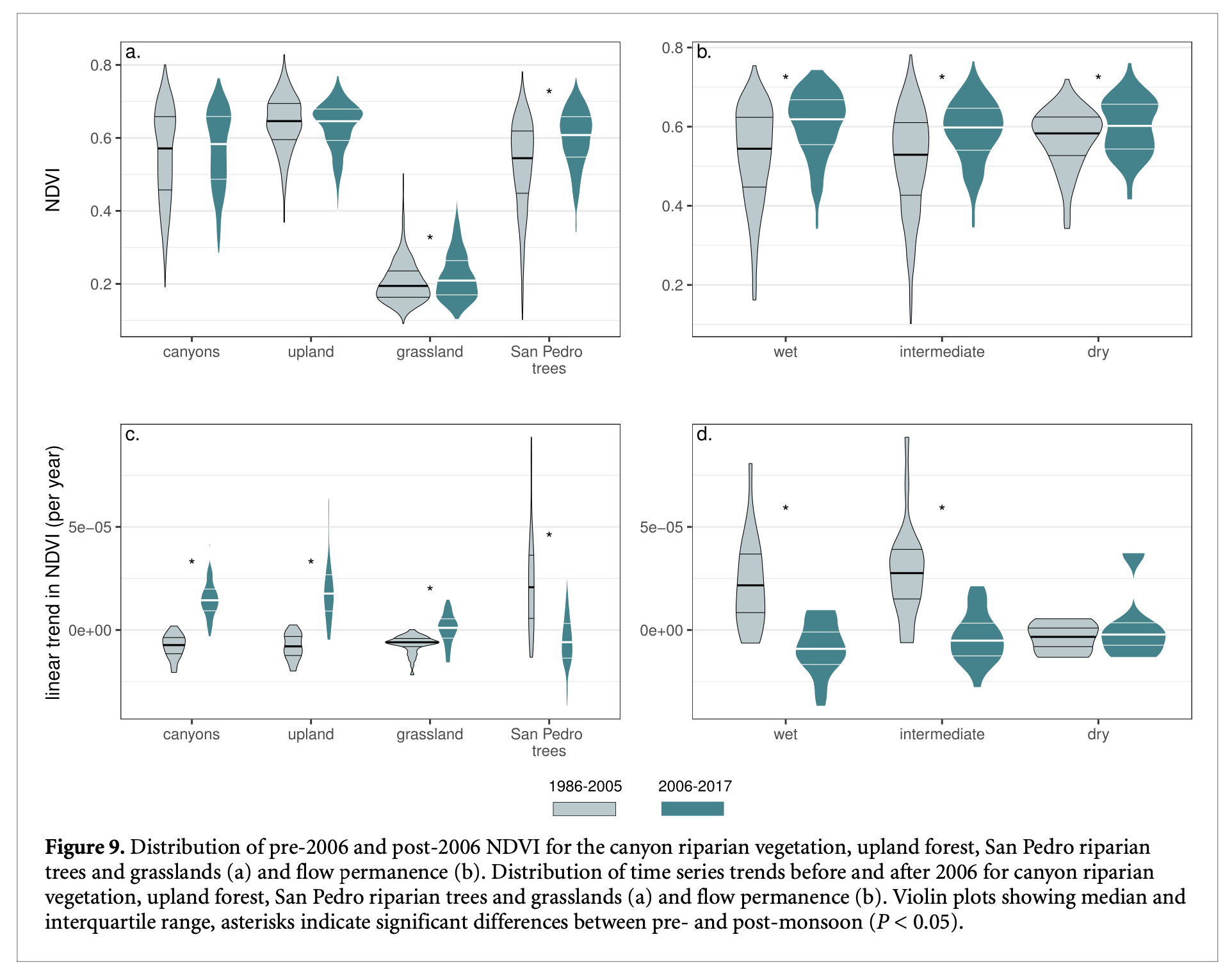Vegetation responses to climatic and geologic controls on water availability in Arizona

Sabathier, R., Singer, M.B., Stella, J., Roberts, D., Caylor, K.K.(2021) Vegetation responses to climatic and geologic controls on water availability in Arizona. Environmental Research Letters, 10.1088/1748-9326/abfe8c
Abstract:Vegetation distribution, composition and health in arid regions are largely dependent on water availability controlled by climate, local topography and geology. Despite a general understanding of climatic and geologic drivers in plant communities, trends in plant responses to water distribution and storage across areas under different local controls are poorly understood. Here we investigate the multi-decadal interactions between spatial heterogeneity of geologic controls and temporal variation of climate, and their impacts on water availability to vegetation and plant responses (via normalized difference vegetation index, NDVI) in a monsoon-driven arid region of southeastern Arizona. We find that grasslands display low NDVI and respond directly to monsoonal rainfall. In the uplands, vegetation on west-facing slopes and in canyons share similar NDVI averages and variability, suggesting that they both use water from surface-groundwater flow paths through fractured rocks. Along the San Pedro River, streamflow, groundwater, and NDVI in deciduous riparian woodlands are strongly responsive to monsoonal rainfall, but water availability stratifies between wet (perennial), intermediate, and dry reaches, underlain by different local geologic controls that affect water table elevation. These controls interact with the driving climate to affect water availability in the shallow alluvial aquifer of the riparian zone, a primary water source to the gallery phreatophytes. A recent shift toward a strengthened monsoon in the region has led to an increase in water availability for grasslands and for dry reaches of the San Pedro, while the benefit is more muted along wetter reaches, where the riparian forest shows signs of having reached its maturity, with diminished trends in NDVI. These results have implications for the future vulnerability of dryland vegetation to climate change, which may be either dampened or intensified by local controls such as geology.
